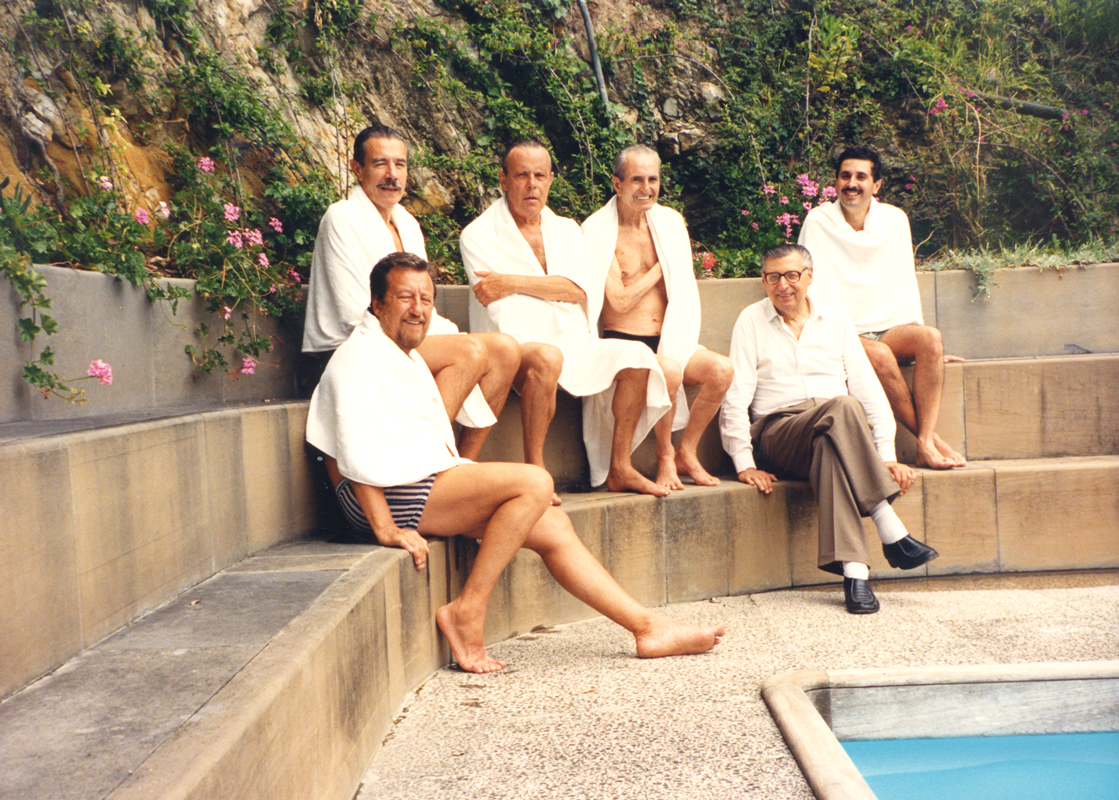Fig. 1 -
Cover of the number 1 of the new series of «Zodiac», February 1989..
Fig. 2 - Cover of the number 1 of «Hinterland», December 1977-January 1978, dedicated to Architecture and public commissioning: a European history.
Fig. 2 - Cover of the number 1 of «Hinterland», December 1977-January 1978, dedicated to Architecture and public commissioning: a European history.

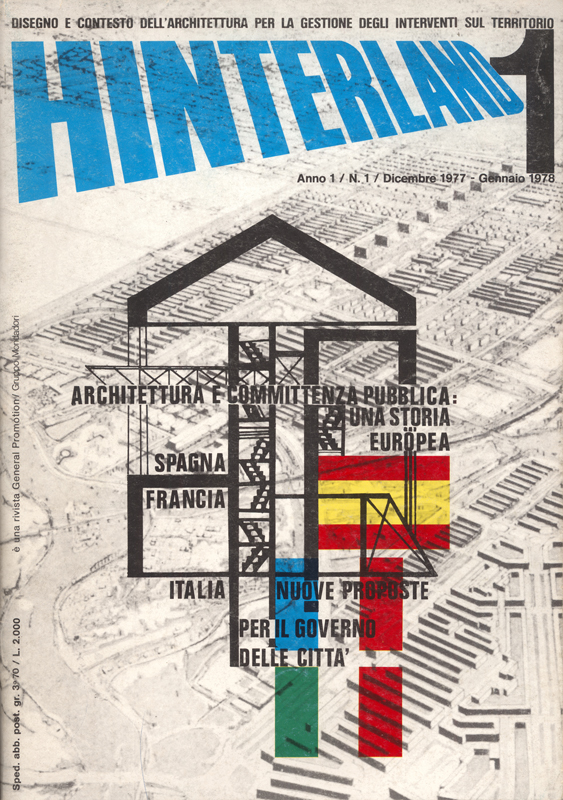
Fig. 3 - Cover of the number 8 of «Zodiac», n.s., October 1992, dedicated to the The Latin American Laboratory.
Fig. 4 - Cover of the number 11 of «Zodiac», n.s., March 1994, dedicated to Architecture in California.
Fig. 4 - Cover of the number 11 of «Zodiac», n.s., March 1994, dedicated to Architecture in California.
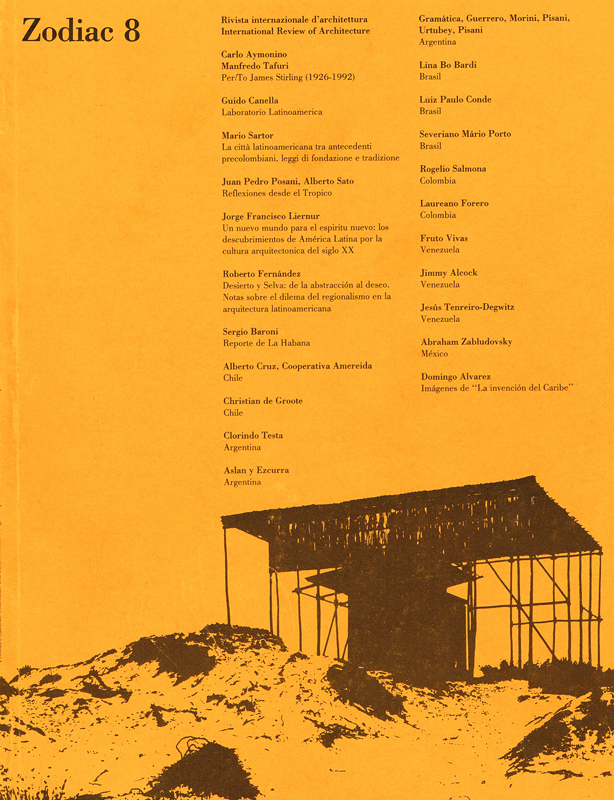
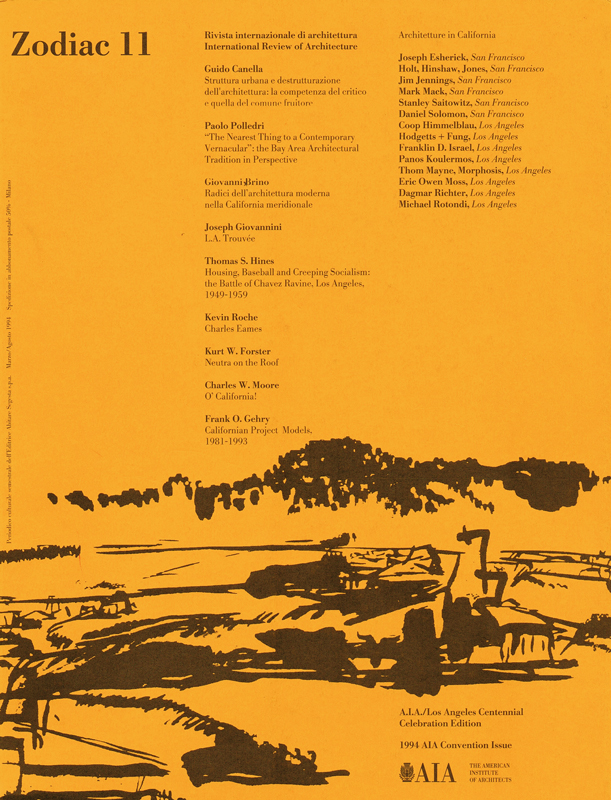
Fig. 5 - Cover of the number 2 of «Zodiac», n.s., September 1989, dedicated to Theatre history and design.
Fig. 6 - Cover of the number 6 of «Zodiac», n.s., October 1991, dedicated to Su certain deviations from museum archetype.
Fig. 6 - Cover of the number 6 of «Zodiac», n.s., October 1991, dedicated to Su certain deviations from museum archetype.
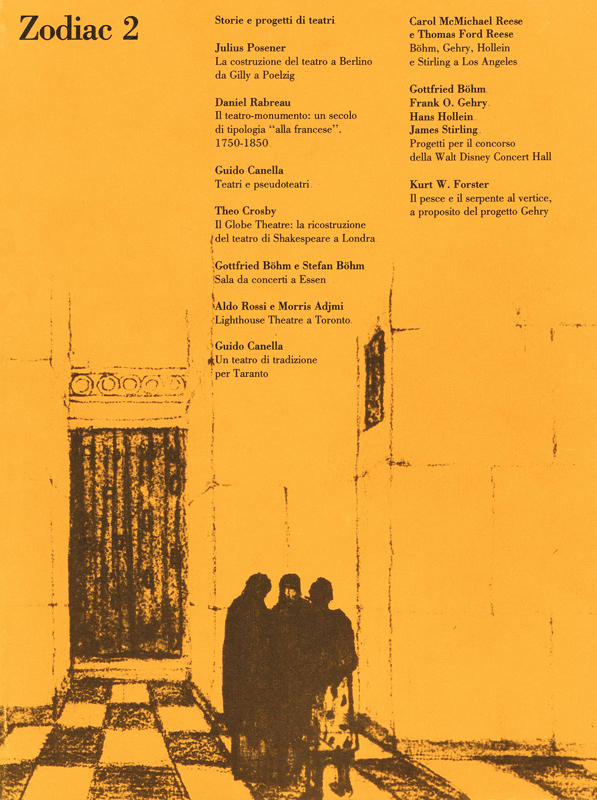
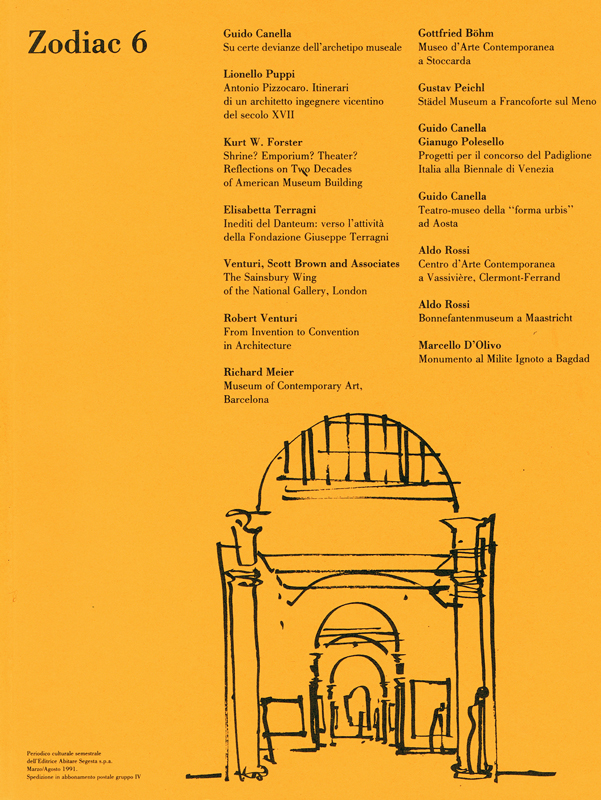
Fig. 7 - Cover of the number 7 of «Zodiac», n.s., April 1992, dedicated to the University and the city.
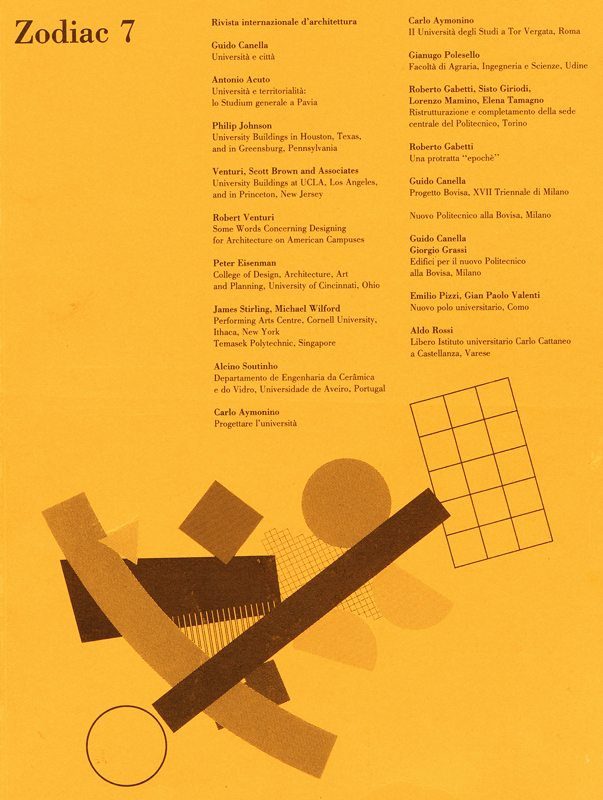
Fig. 8 - Testimony for James Stirling by Carlo Aymonino and Manfredo Tafuri, in «Zodiac», n.s., n. 8, October 1992, pp- 4-5.

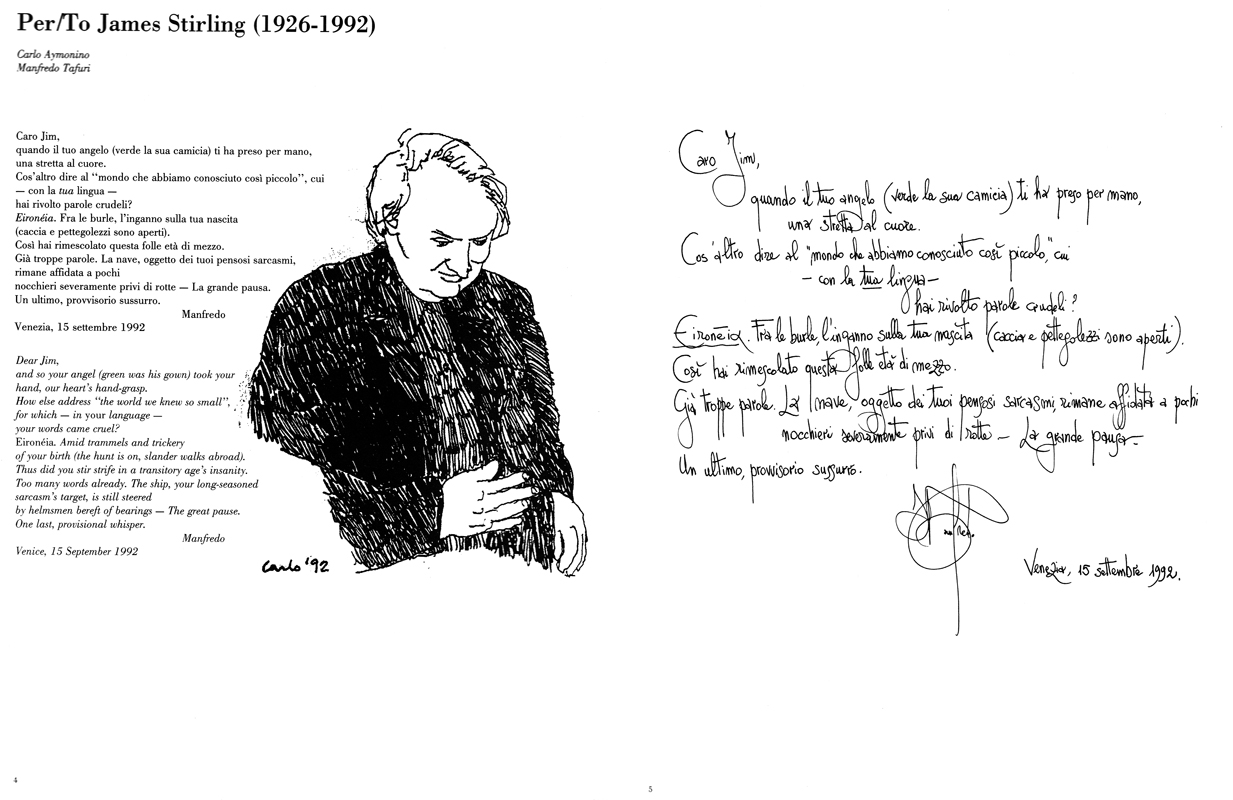
Fig. 9 - Testimony
for Aldo Rossi by Carlo Aymonino, Ignazio Gardella and Philip Johnson,
in «Zodiac», n.s., n. 18, November 1997, pp- 4-5.
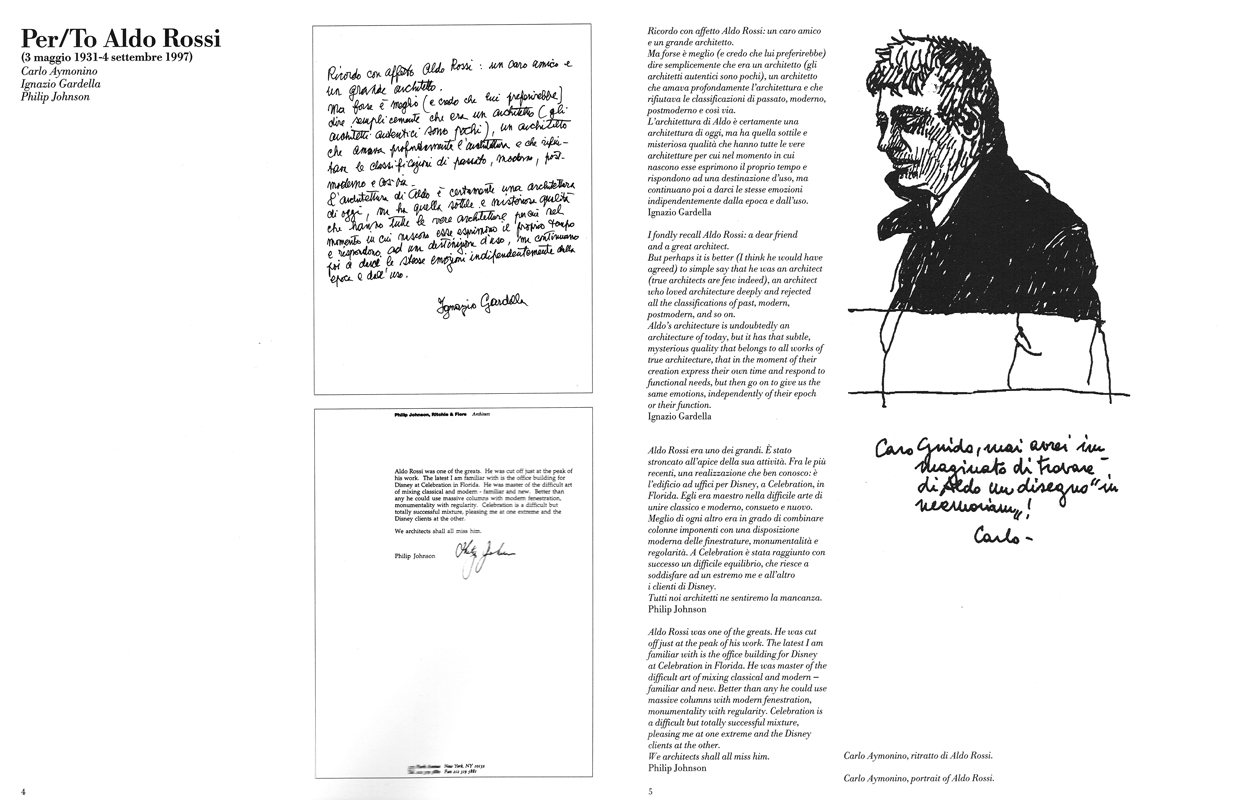
Fig.
10 - Initial pages of the essay by Julius Posener Theater construction
in Berlin from Gilly to Poelzig, in «Zodiac», n.s., n. 2,
September 1989, pp- 6-7.

Fig. 11 - Two
pages of regesto in the issue dedicated to the generation of architects
born around 1920, in «Zodiac», n.s., n. 16, November 1996,
pp- 34-35.
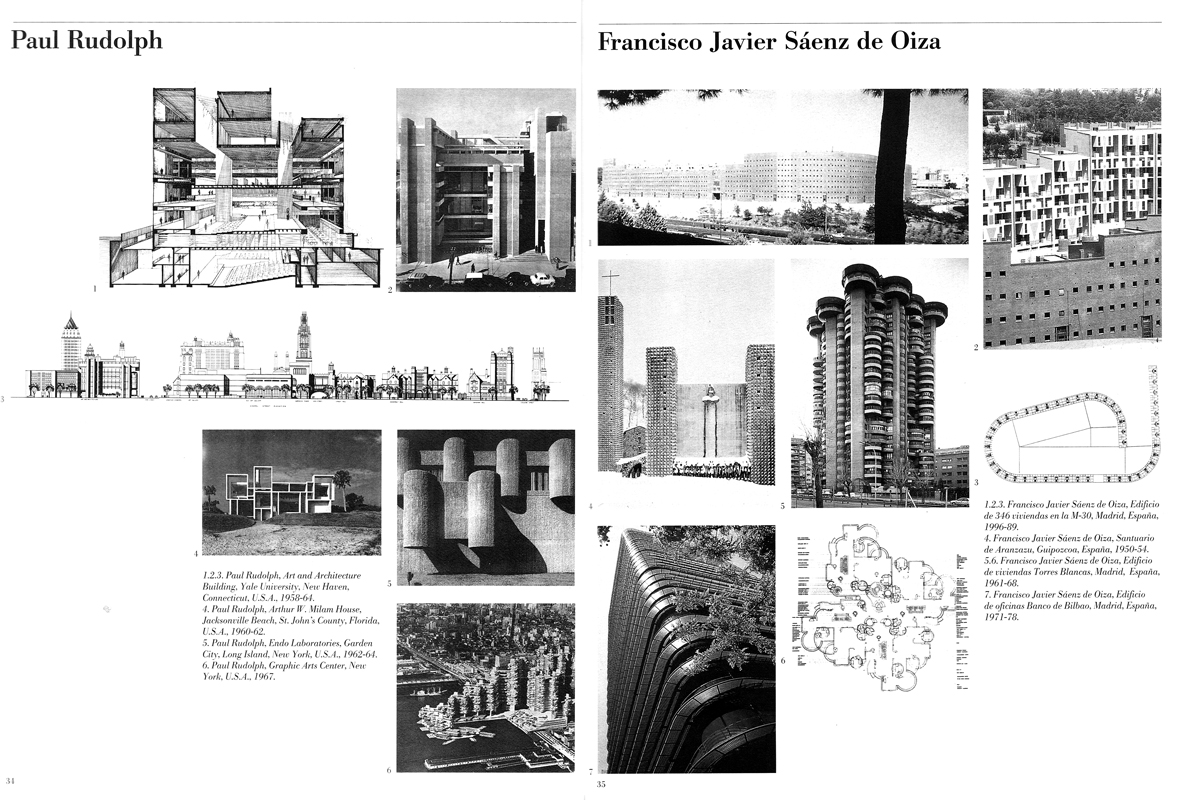
Fig. 12 - Guido
Canella, Letter of invitation to remember Ernesto N. Rogers twenty
years after his death, in «Zodiac», n.s., n. 3, April 1990,
p. 14.
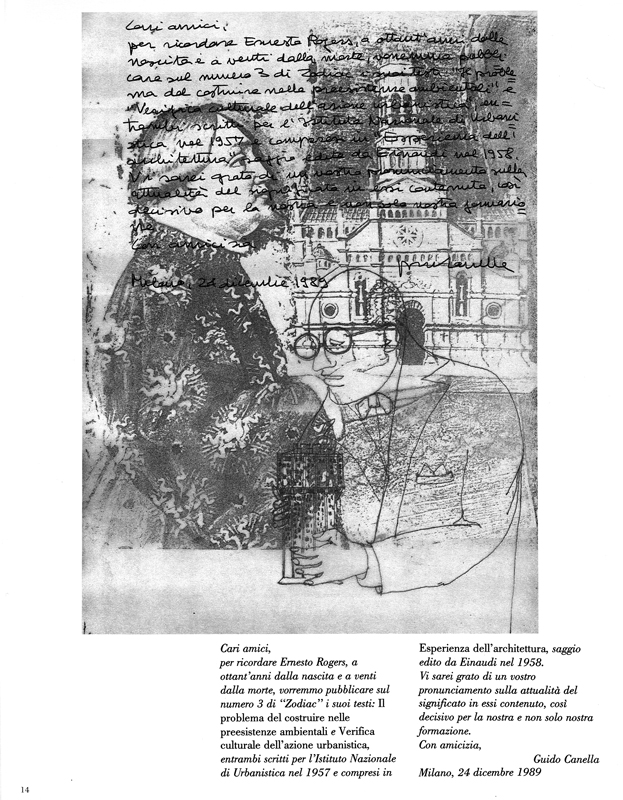
Fig. 13 - Giovanni
Testori, Initial pages of the contribution Project for the completation
of the San Carlo Sacro Monte, in «Zodiac», n.s., n. 9, June
1993, pp. 64-65. For that number, Canella had invited some architects
and friends of the newspaper to make some proposals for the completion
of the Sacro Monte di San Carlo in Arona, which remained unfinished.
Testori, then in the hospital, had contributed with a portrait of San
Carlo and some excerpts from his Triumphs. Carlo Aymonino, Ignazio
Gardella, Philip Johnson, Gianugo Polesello, Aldo Rossi and Luciano
Semerani had joined in the invitation of Canella.
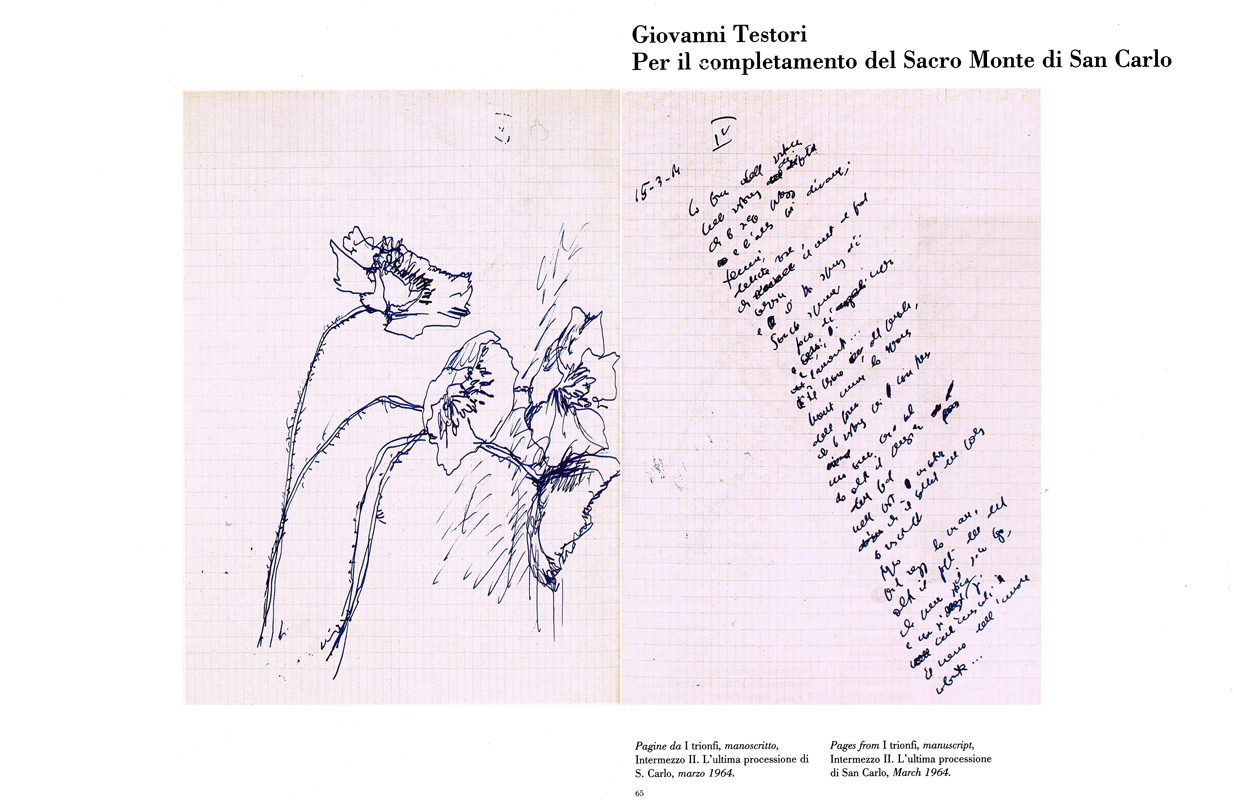
Fig. 14 - Carlo
Aymonino, Testimony for Ernesto N. Rogers twenty years after his death,
in «Zodiac», n.s., n. 3, April 1990, pp. 20-21.
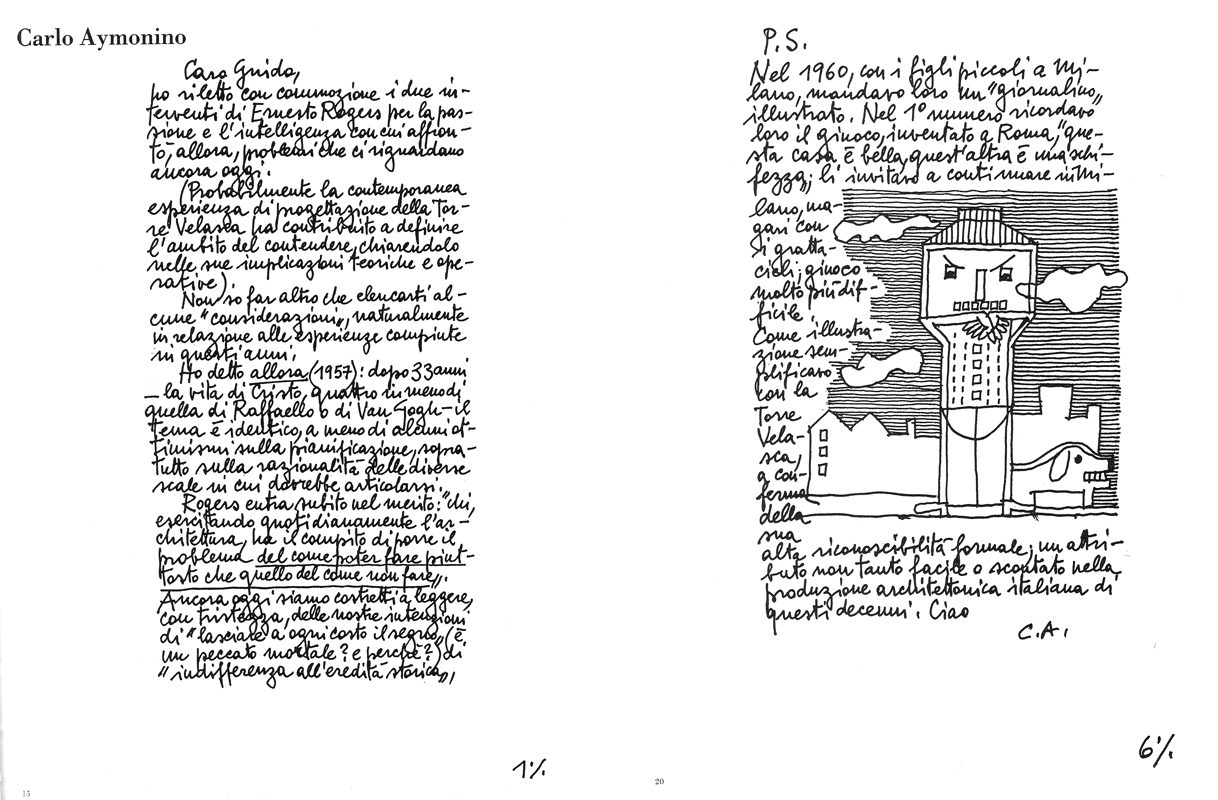
Fig. 15 - Cover
of the number 21 of «Zodiac», the latest in the new series,
December 1999, dedicated to Architectural criticsm after Zevi.
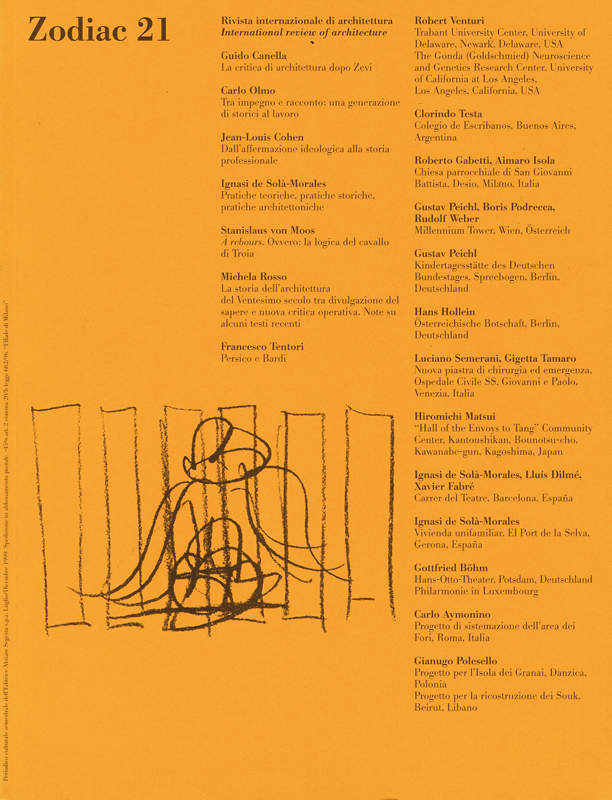
Fig. 16 - Steering
Committee for the setting of numbers 5 and 6 in the residence of the
Renato Minetto editor in Sestri Levante, 28-29 July 1990: we recognize
Carlo Aymonino, Guido Canella, Ignazio Gardella, Renato Minetto, Renzo
Zorzi.
